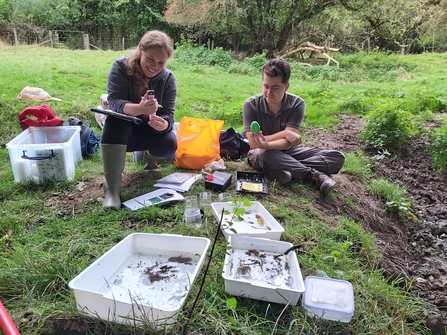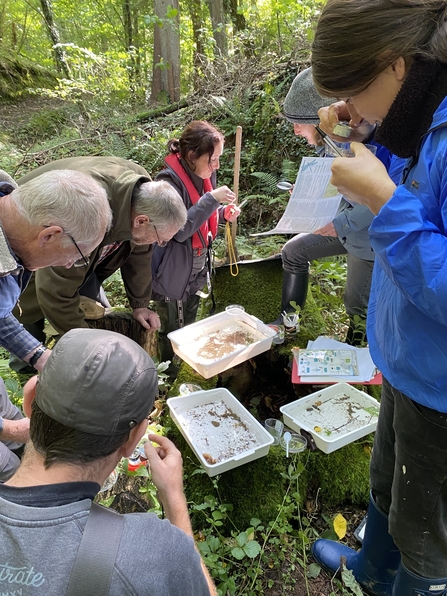Restoring our Rivers Blog - the Lingen & Lime Brooks
14th December 2023
November saw significant progress for our Restoring our Rivers Project. The Nature Recovery Team have been busy visiting farmers in the Upper Lugg catchment in NW Herefordshire, giving land advice on how to improve the quality of the watercourses running through their land. The recommendations given by our team included a variety of different natural flood management (NFM) solutions such as fencing off watercourses from livestock, planting trees along watercourses, creating buffer strips along watercourses and constructing leaky dams. These measures not only improve river health by limiting run-off, preventing bank erosion and helping to reduce flooding downstream, they also improve biodiversity by creating riparian habitats. This will benefit iconic species such as dippers, otters, salmon and white-clawed crayfish.
Our farm visits have proven to be a major success, as several of the land owners that we have visited have agreed to instigate the NFM solutions that we had recommended to them. These works will be funded by our project partners at The Environment Agency. As we install these new NFM works over the succeeding months, we hope to see a tangible improvement in the quality of the Lime and Lingen Brooks that we are working on. We have set up several monitoring points directly downstream from these NFM measures, and every two months a team of volunteers will conduct an in-depth survey measuring the water quality, surveying the river morphology, riparian habitats and the diversity of fresh water invertebrates. This long term surveying project will create a detailed data set that will provide important insights into how these watercourses are changing in response to our NFM solutions.
6th November 2023
As part of the project we are conducting extensive surveying of the Upper Lugg catchment, with a large focus on freshwater invertebrates. This is because they offer an insight into the general health of a river.
One of the most important of these freshwater invertebrates are mayfly nymphs which come in all sorts of shapes and sizes. These nymphs are identifiable from their three tails, six legs and feathery gills along their abdomen. Amazingly while the adults only live a few days, these nymph larvae may live amongst the stony bed of a river for as long as 2 years!

Sarah King and Toby Fountain, River Surveys 2023
30th October 2023
As part of our Restoring our Rivers project, we have been conducting farm visits throughout the Upper Lugg catchment. This is to give advice to landowners on how to limit agricultural impacts on watercourses as well as to implement and provide funding for natural flood management solutions such as leaky dams and riparian tree planting. Such solutions not only improve river health and biodiversity but they also help to slow the flow of rivers and reduce flood risk further downstream.
9th October 2023

Volunteer Training Day, Recovering our Rivers, October 2023
We have been training our dedicated volunteers how to conduct riparian habitat surveys as well as to conduct surveys of fresh water invertebrates to access the health of a watercourse. We will be primarily be working on the beautiful Lime and Lingen Brooks in North West Herefordshire and will be helping to implement natural flood management solutions in the catchment in order to improve the health of these watercourses.
